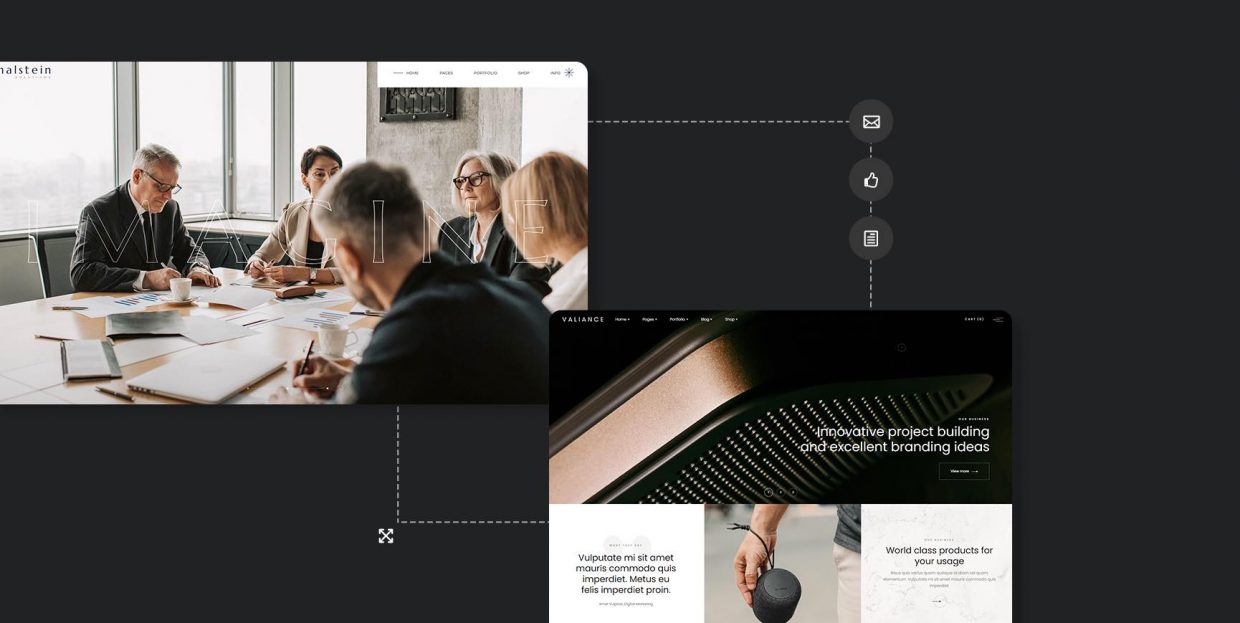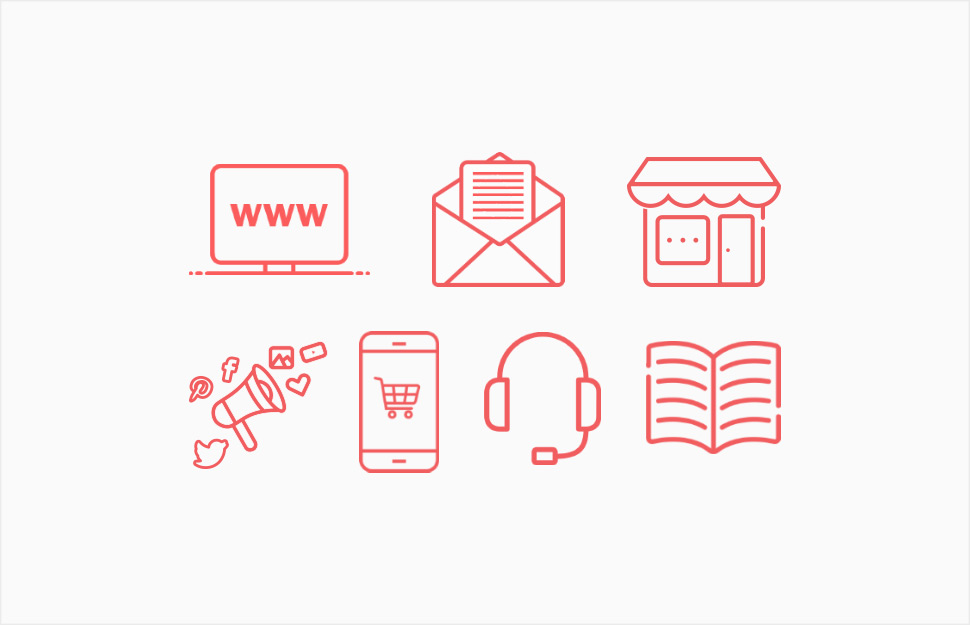Omnichannel Marketing and WordPress: Everything You Need to Know

Omnichannel marketing may seem like one of those buzzwords that make you sound like an expert and don’t really mean much – but that’s only if you’re completely clueless about digital marketing. It’s okay if you are – perhaps you’re just starting out in online business and are yet to get a grasp of the complexities of this field. Maybe, on the other hand, you do understand what omnichannel marketing is but you have no idea where to start with implementing it into your WordPress-based online presence, brand or product.
That’s what we’re here for today. Stick around as we talk about:

Omnichannel marketing can be defined as a cohesive integration of branding, sales, advertising and messaging both online and offline, with the purpose of providing a unique concept, message and tone throughout the sales funnel.
If that doesn’t mean much to you because of the lingo, let’s put it this way: in omnichannel marketing, you are making sure that whatever the channel your customers use to reach your brand and interact with you, their experience will be the same, your message will be the same and your tone will be the same. They will have a seamless experience and they may start their journey through one channel, proceed or modify it through another and perhaps finish it through the third one.
Omnichannel can mean a lot of things, strategy-wise. There’s no single rulebook that says you have to do this and that to have a successful omnichannel campaign. It all depends on your channels, first of all, and then on what sort of customer approach you’re cultivating.
For instance, sending out an email to a customer that has abandoned their cart is an omnichannel technique.
Sending an sms, a message via instant messaging services or social media, informing the customer about a promotion or a sales event is an omnichannel technique.
Retargeting ads in one inbox related to the items added to cart on another platform is an omnichannel technique.
Giving out coupons to in-store customers that they can use for their online purchases is an omnichannel technique.
Using elements of a single campaign for billboards, posters, social media banners, ads and online editorials is an omnichannel technique.
You get the idea. We’ll get deeper into omnichannel strategies a bit later on. Right now we need to get one thing clear: is omnichannel the same as multichannel?

It could be said that in omnichannel marketing the primary focus is on the customer (and customer experience and customer journey). In multichannel marketing, however, the focus is on the brand.
Multichannel simply means using more than one channel of communication, for instance offline and online, and using those channels to promote a product or a service, or the brand as a whole.
In multichannel, the customer is contacted online, in-print and in brick-and-mortar stores, but each of these channels uses a different approach. In omnichannel, on the other hand, the approach to all the channels is integrated into a single seamless experience. The customers get to choose how (and through which channel) they want to engage with the funnel.
Another important distinction is that in multichannel strategies each channel functions independently and can deliver different messages, while in omnichannel the campaign is designed to have all channels working together.
Finally, personalization plays a very important role in omnichannel marketing. Because the communication is unified and seamless, your customer should expect you to know who he or she is when they interact with you.
Let’s give you an example. If your customer visits your Facebook page, they expect to have the same or similar experience that they have with your website, in terms of branding and communication. And if they have provided their information (personal or purchase info), they expect you to be aware of it and not to have them repeat it when they ask for help via live chat or phone support. In omnichannel, this is possible since the entire experience is connected and unified.
Retention
By providing a smooth and streamlined customer experience with personalized communication throughout all your channels, you’re building trust in your brand. You come off as dedicated and consistent, and the customers appreciate that. Considering that, according to Invesp, the chances of selling to an existing customer are between 60% and 70% while the chances of selling to a new one are just 5%-20%, it’s clear why you want to work on your customer retention. And omnichannel marketing helps greatly with that.
Improved Customer Experience
When exposed to a unified and smooth experience that obviously works seamlessly, like a clock, throughout different channels, customers tend to be positively impressed. It shows dedication, care and effort, and that’s something we can all appreciate. If we can start a process (a purchase, for instance) in one channel and complete it in another, with our info saved and remembered, we’re that much happier with the experience.
Brand Recognition
Since omnichannel marketing includes in-store experience, it’s clear that consistent branding and messaging throughout all channels improves brand recognition and awareness. Simply put – omnichannel marketing makes you more recognizable.
Better Sales and Higher Revenue
According to omnichannel marketing statistics, brands that use three or more channels in their marketing campaigns have a 287% higher purchase rate, while the order rate is 494% higher. These numbers alone are enough to prove that there’s a direct link between omnichannel marketing and better sales – and consequently, higher revenue. You invest a bit in a strong seamless omnichannel campaign, and it pays off significantly in your business bottom line.
Better customer insight
A true omnichannel campaign is also highly beneficial for your analytics and data attribution efforts. Because you will want to track engagement throughout all of your channels, you will be gaining invaluable insight into all the steps of the customer journey. For instance, you will learn which are your customers’ favorite touchpoints and then boost those, while perhaps letting go of the touchpoints that perform poorly.

WordPress itself isn’t of essence here because your website is only one of your channels. However, in order to connect them into a single strategy, you need to be sure your website can support it. Fortunately, WordPress as a platform is ideal for that because it’s so flexible. You can basically do anything you want with it, and you can certainly connect your WordPress website with your other channels into a unified experience.
Set Your Business Goal
Every strategy, regardless of the scope or industry, begins with establishing the business end goal, however obvious. This helps keep a sharp focus on the outcome, which, in turn, helps shape the strategy pillars and tactics.
Let’s assume you have an online shop with products or services you want to sell. Your end goal should be quantified per period – six months, a year, two years. You want to sell this many products or close this many service contracts in the given period. Keep this number in mind and monitor the progress regularly along the way.
Establish Your Customer Persona
The customer persona is a representation of your ideal customer, the one you’re speaking through your channels and the one you see as the most likely to convert. In order to have a successful, focused strategy, you need to build it around that persona. This will help you establish the tone and the language of your messages, and its content too, of course. You wouldn’t use the same language for a 60 year old woman from rural areas with limited access to the internet as you would to an urban millennial who spends most of his or her waking life on the phone or tablet.
Create a Customer Journey
Customer journey is a sequence of steps a person takes from the moment they first become aware of your brand, until becoming a customer. It’s a complicated process, both offline and online, and, as we know, the two often interact. A person can start the journey online and finish it in your brick-and-mortar location, which is, in fact, a very common scenario.
A thorough understanding of the processes that occur along this way will help you create an effective customer journey map and then use it in your omnichannel strategy. There are touchpoints that need to be synchronized and that point to one another (for example, registration for a newsletter or sms in the physical store can help increase checkout conversion rates of your eCommerce website by informing the customers about promotions and deals).
Segment Your Audience
Because omnichannel marketing often involves personalization, and has a strong focus on the customer instead of the brand, it is vital to take all your customer personas (because you will have more than one) and segment your audience according to them. Segmentation is important as it helps you shape the messages and design outcomes for each audience group. You can segment by location, age, gender, but also by interaction with your brand. After you have grouped the audience into segments, you will apply specific techniques and deploy pacific messages to each of them.
Connect Your Online Store with Your Physical Business
These days, an omnichannel strategy is basically all about connecting the online and offline experiences of your brand. In multichannel, these can be completely different. In omnichannel, however, you want to provide a seamless and unified experience. One way to do so is by creating some form of connection between your physical business and your online store or website. One obvious way to do so is by making it easy for the customers in your brick-and-mortar store to find you online – on social media, and on your website. You can display QR codes, stickers with social media icons, and so on. You can also have the customers give you their email in order to send them notifications about sales and special promotions reserved for subscribers only.
Track the Results
The path to conversion is almost never a straight one. A customer may discover you through TikTok and then decide to visit your store, or find something they like in your store and decide to purchase it online. Each of these paths needs to be tracked so you can learn how your audience converts. Once you have these insights, you can tweak your omnichannel strategy accordingly, combined with personalization.
Google Analytics remains the best tool for tracking all sorts of events, but in many cases, it won’t be enough. If you’re running a WooCommerce shop, there’s a range of excellent WooCommerce analytics plugins you can use.

Now that we’ve covered the basics, let’s see how you can make sure your omnichannel strategy really works.
-
Use a quality omnichannel solution. For instance, the official WooCommerce extension Local Pickup allows your customers to pick up purchased goods in your local store. Then there’s Square, an excellent, all-round solution not just for payment gateways and connection with your WooCommerce store, but for more complex omnichannel but for a range of other vital omnichannel features, too.
-
Integrate social media into your physical store. For instance, you can put up displays showing product reviews, encourage customers to share what they’ve purchased on their social media profiles, or even display a live feed of your social profiles.
-
Create content that engages and educates. Content marketing helps you build brand authority and serves as one of the pillars of every omnichannel strategy. The content you create needs to provide value – be it entertainment or education – to your audience/customers. You can gamify your content, create short how-to videos related to your product, have influencers review or wear/eat/use your products and share it online, etc. You may also want to consider user-generated content (reviews, ratings, etc) as part of your campaigns.
-
Automate your customer engagement. In order to provide a seamless experience, you will need to know each customer very well – what they want, what they need, which are their pain points, how they prefer to shop, their shopping history with you, etc. For this, you may need a customer management software, such as Square we mentioned earlier, or another solution of your choice.
-
Leverage AR and VR. These technologies can help you merge online and offline experiences, and build upon each of them. For example, you can offer a virtual tryout tool in your online shop, which would allow visitors to try on clothes or see how a piece of furniture will fit their home. Conversely, you can create a virtual aisle with products that are not available in-store but can be purchased online.
-
Create a unified loyalty program. These programs are always great for building your customer base and do wonders for retention, too. Make sure the program features the same or similar elements and integrates both into online and the offline shopping experience. For instance, if you already award points for purchasing in physical stores, you can add a special points feature for interacting with the brand in the virtual world (online purchases, engagement like shares and reposts, etc).
Wrapping It Up
If you’ve come this far, you now hopefully have a much better understanding of the concept of omnichannel marketing. Sure, this model may not be for every business, but if you do retail both online and offline, if you use more than one channel of communication with your customers and if you plan to scale up, omnichannel is definitely something you should consider investing your time and effort into.
If you have more ideas on how to create the perfect omnichannel strategy or you have questions related to this topic, hit us up in the comments!




